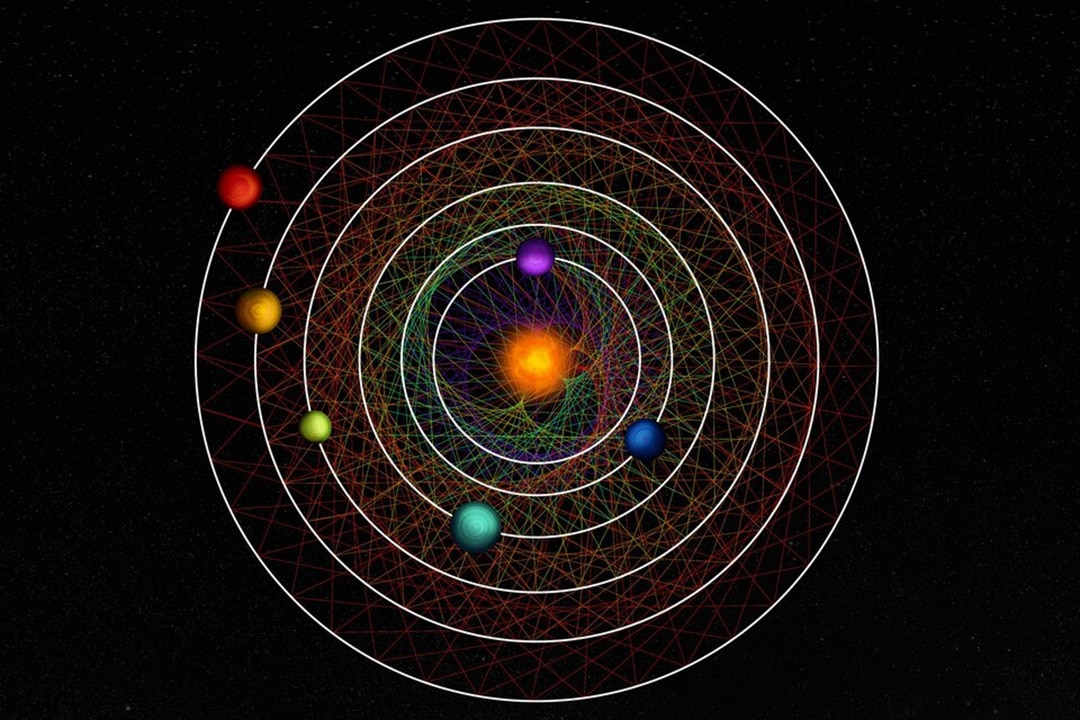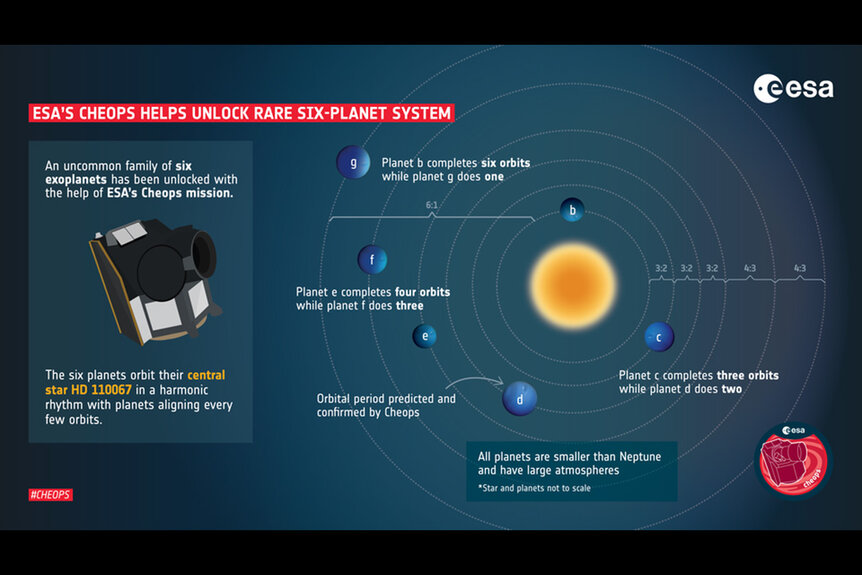Create a free profile to get unlimited access to exclusive videos, sweepstakes, and more!
Planets in Rare Star System Dance in Perfect Mathematical Harmony
This system has been running flawlessly for a billion years.

Lars von Trier’s 2011 sci-fi drama Melancholia (streaming now on Peacock) is two stories at once. On one hand, it is about the very personal struggle inherent in being a person; how we balance our relationships, our obligations, and our happiness. On the other hand it’s about the imminent destruction of the Earth when an unexpected planet shows up and smashes into us. It’s also about how sometimes those two things can feel the same.
It’s unlikely that any unannounced worlds are going to show up and sucker punch us, but it is true that planets don’t always orbit in wholly predictable ways. Most systems start out with a high degree of symmetry and harmony but soon become more chaotic, making the position and movement of exoplanets (worlds outside of our solar system) difficult to predict. Recently, however, astronomers detected a rare system of nearby planets all dancing in almost perfect harmony.
The Planets Dance and None of Them Dance Better Than These
NASA’s Transiting Exoplanet Survey Satellite (TESS) first detected planets around the star HD110067 in 2020. Initial analysis suggested two worlds but they didn’t get a good enough look to figure out the orbits. Two years later, TESS looked again and once again there were two worlds, but when they compared the two measurements they didn’t quite make sense. So, astronomers went hunting for more data using the European Space Agency’s (ESA’s) CHEOPS mission. That’s short for CHaracterizing ExOPlanet Satellite.
RELATED: Earth’s Mantle May Be Partially Made of a Different, Dead Planet
Using CHEOPS, astronomers were able to cast a wide net and look for signals in a wide range of orbits around HD110067. That’s when they found a third planet, and with it a key to understanding the entire system and locating even more planets. The trick was a unique mathematical relationship, according to an ESA statement.
Astronomers realized that the orbital period (the amount of time it takes an exoplanet to complete an orbit around its star) of the innermost planet was 9.114 days. The orbital period of the second planet was 13.763 days and the third was 20.519 days. Each planet’s orbit is almost exactly 1.5 times the length of the planet before it. Put another way, for every three orbits of the first planet, the second planet completes two. The relationship remains true for the third and fourth planets as well. The fifth and sixth planets have a 4:3 resonance in which they orbit three times for every four orbits of the planet before them. Every planet in this system is dancing in near perfect harmony with the worlds around it.
This sort of undisturbed mathematical dance is unusual in the cosmos, particularly in a system as old as this one. Most systems begin in harmonic resonance but that balance is easily disturbed. The formation of a large planet or a close pass with another star can disrupt orbits and bump things out of sync. Over time, orbits tend to get a little messier than they began. Astronomers estimate only about 1% of planetary systems keep their nicely organized orbital paths. Yet, this system is running as if it were fresh out of the box.
Despite having formed more than a billion years ago, the system around HD110067 is filled with planets orbiting exactly where they are supposed to be. So much so that we were able to find planets we didn’t know were there by following a simple mathematical pattern. If only that were true for the rogue planet Melancholia.
Catch Melancholia streaming right now on Peacock.



























